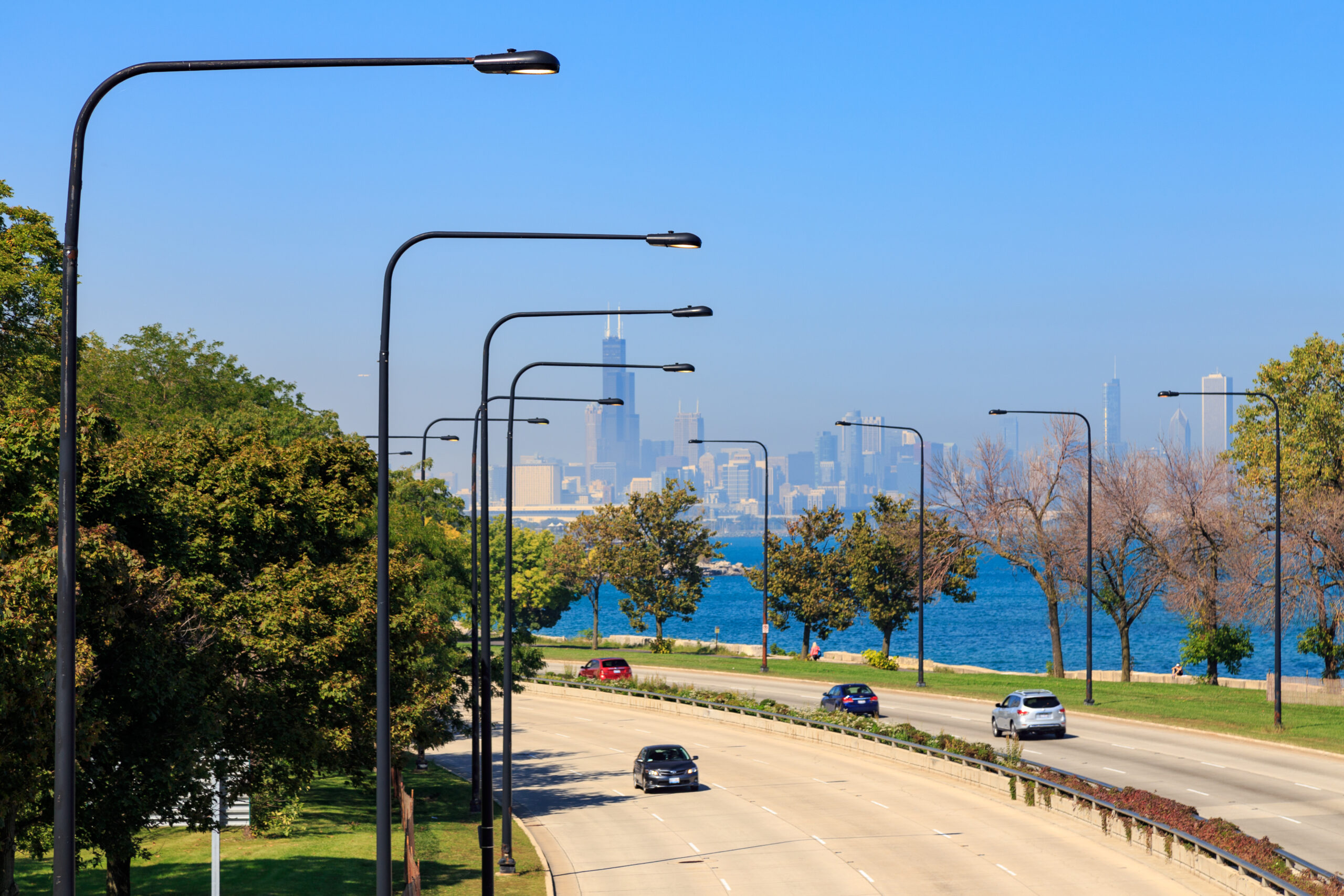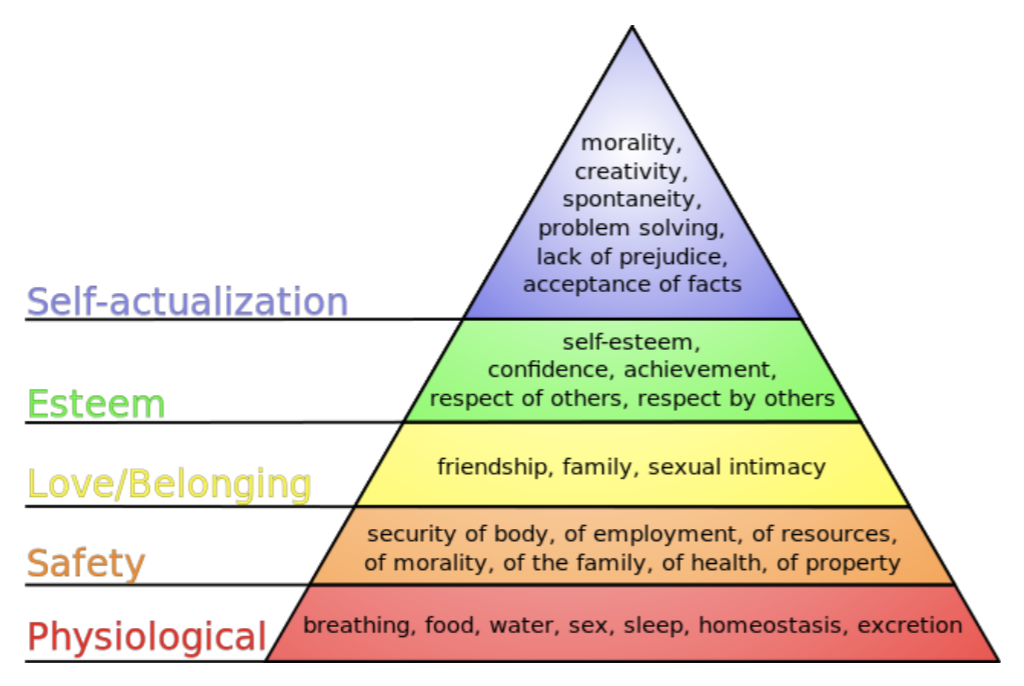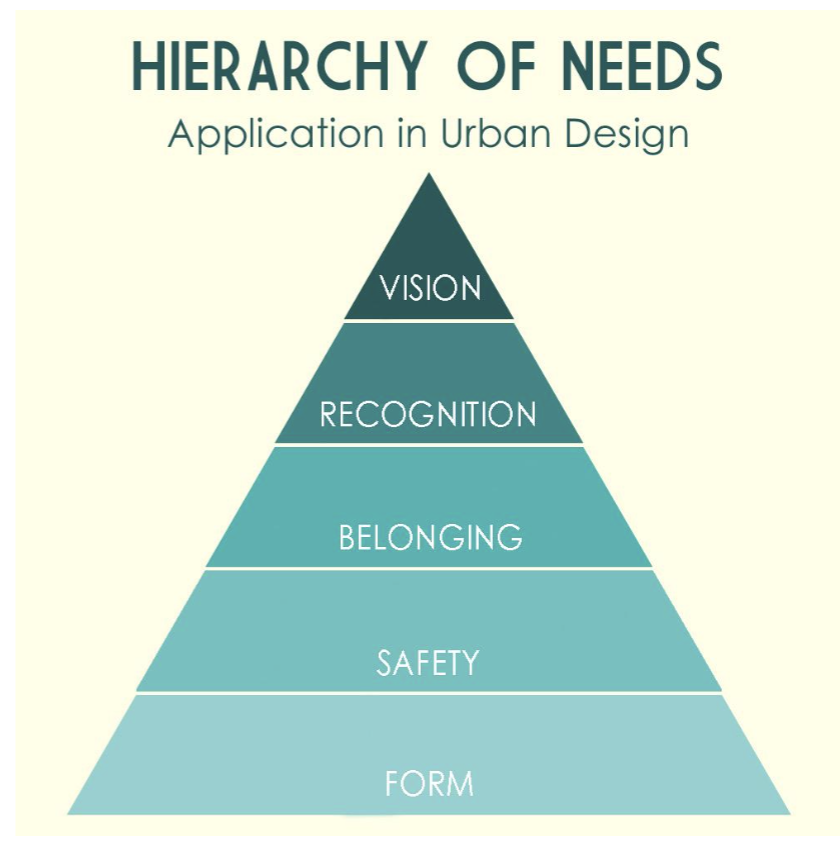By Clara Pokorny
Planners are, at the core of our disciplinary work, idealists. The trouble, then, lies in how we envision “ideal.” In 1898, the “ideal” city was one of infrastructural grandeur. Centered around sweeping plazas and parks, Daniel Burnham’s City Beautiful movement theorized that the more beautiful a city was, the more virtuous its citizens. While city squares and green spaces are certainly noble causes, Burnham’s plans flattened the many movings parts of a city. A city designed solely around the aesthetic power of its infrastructure misses the complexity of urban life --besides transportation, green space, bolstering economies, and so on, the individual agency of residents matters. Do residents feel comfortable in a city of grandeur, or are they too intimidated to own the space?

Ambitious plans for transportation systems and skyscrapers took precedence over the maintenance of pre-existing infrastructure. Renewal flattened essential players, including citizens. There wasn’t much consideration for personal experience, a fact most apparent in the displacement of low-income and minority communities. Government funding distributed to cities was intended to raze and rebuild housing, but was most commonly used to develop urban centers instead. Communities were razed, but the infrastructure meant to replace this destruction didn’t follow through.
In their “Urban Renewal, 1950-1966” map, the University of Richmond’s Digital Scholarship Lab visualizes the results of this disservice. By 2018, our “ideal” has become a thriving economic base. Neoliberalism's talons are thoroughly embedded in the field of planning. The “life” of the city is no longer considered the quality of design of its infrastructure as one coherent project. Instead, planners of the modern era place meaning in the integrity of a city’s economic success. A thriving central business district facilitates growth, and this growth spreads throughout the city in the form of trickle-down economic benefit. That is the ideal --rarely does it happen as simply and cleanly as we would like it to.
Truly well-functioning economic prosperity requires cooperation between municipal government and private corporations, but can we ensure this fact? Corporations are unwieldy agents, and municipalities are often placed in a position that forces them to compromise. The neoliberal ideal would, hypothetically, be a successful urban vision, but often times results in cities that kneel too deeply to the wishes of corporations in the hopes to accommodate and retain their economic stimulus. Here, the “ideal” fails to recognize the potential risks of poor deals, and relies too heavily on the collaboration of public and private entities, a fact that is seldom true. Historical planning “ideals” condense the complexity of cityscapes into what is easiest to manipulate --infrastructure, assembly-line construction, economic welfare.
“Cities are often compared to living organisms. Like living organisms, cities must evolve and adapt to survive in an ever changing world. A city’s choice is simple, evolve and adapt or perish. When I say perish, I am referring to succumbing to the pressures of market forces, inequality and competition with other cities.”
-- Eric Anthony Johnson
This metaphor recruits the language of biology --the living organism --to explain a city’s functions. In it, citizens become the “blood,” roads the “vascular system,” buildings the “cells.” Either the organism persists and grows, or succumbs to the constant battle for evolutionary adaptation. Is a city’s sole purpose to survive, though, and not instead to serve its people? Must we flatten the minutiae of city life into the metaphor of some competitive creature? How much more can this metaphor be complicated, when human experience is flattened into the role of “blood?” Though this comparison moves us away from the idea of utopian infrastructural visioning, it remains bounded by the limits of a bird’s eye view.

I think the most valuable way to conceptualize a city’s purpose is through Abraham Maslow’s Hierarchy of Needs. In 1943, Maslow theorized that human existence can be universally broken down into a list of hierarchical needs. Beginning with base necessities, all of us need food, water, breath, etc. As the pyramid culminates, these requirements become increasingly social and abstracted; at the top of the pyramid is self-actualization, the ability to realize self-fulfillment.
Applying Maslow’s Hierarchy to urbanism is not my original thought. Many have theorized ways that planning may incorporate this concept into applied practice; see Mallory B.E. Baches’s interpretation to the right. How does this mode of thinking unflatten? Does the prioritization of citizen experience actually do anything new for a city?
When we consider planning’s legacy of utopias, the modus operandi focuses on the city at large. An all-encompassing view seems intuitive to planning, but in the process we flatten citizen experience and lose sight of the complexities that make cities special. When planning is citizen-focused, when we prioritize the lived day-to-day life of our people, we complicate or disciplinary traditions. No longer are citizens the “filler,” the “blood,” or the “pawns” in a grander vision. What would this look like, though? An inclusive planning process means residents are involved in brainstorming, in decision-making, in revision, in funding approvals --an inclusive process allows residents to take agency in the forces that shape their neighborhoods, blocks, and homes.

All this having been said, here is what I call for in the wake of my time with the Humanities Research Institute at Illinois: an unflattening of local knowledge in urban planning. It is time that planners change our epistemological tradition from valuing visioning to valuing real experience. This isn’t calling for grassroots revolution, because bottom-up advocacy is most often done as insurgent objection to governmental change. Instead, I’m calling for the active collaboration between municipalities and their people, with a dedicated prioritization of experiential knowledge over developer promises, corporate proposals, or grand utopian visioning. The people who know the city best aren’t the people who designed it, they’re the ones who live in it on a daily basis. It is time for planners to stop flattening them into the murk of “city life.”
Flatness is a complex analytic. Flatness is multidimensional and multimodal, defying its own definition. Beginning this internship, I was admittedly hesitant about the use of flatnessas an analytic in planning. Thinking too spatially, I was bound to the idea of the planning process being physically flattening. As we’ve seen, though, flattening touches history, epistemology, experience, identity, and so many more ways ofunderstanding the world. City-making has a complicated history of minimizing the importance of lived knowledge, but employing the analytic of flatness allows us to interrogate, reconsider, and learn from that history.
check out other Flatland contributions below









